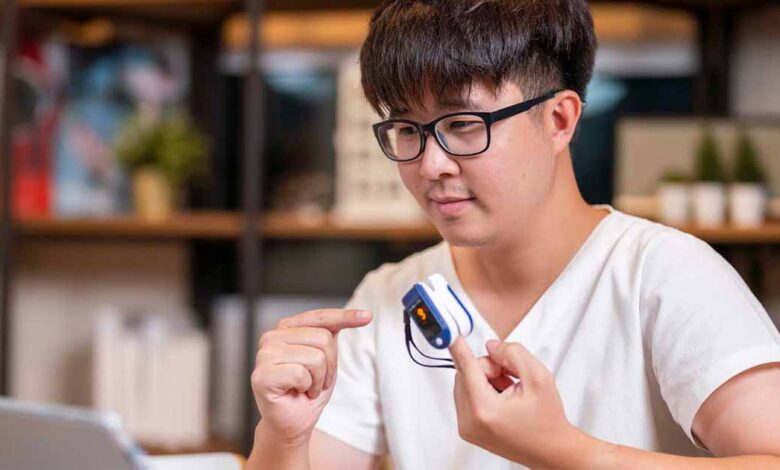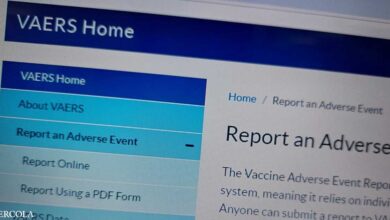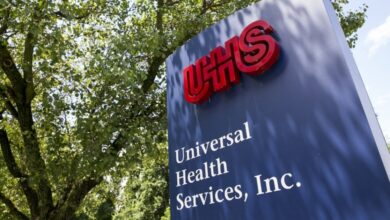Remote patient monitoring reduces blood pressure for patients in New York State


Hypertension, the most prevalent risk factor for cardiovascular disease, affects 1.39 billion adults worldwide and has a 46% uncontrolled rate. That poses a substantial burden for hospitals and health systems – and necessitates a paradigm shift in management strategies, clinicians say.
THE PROBLEM
Uncontrolled hypertension can lead to recurrent heart attacks, strokes, heart failure, chronic kidney disease and death. Social determinants of health and disparities magnify the likelihood of such deadly complications.
Erie County Medical Center Corporation serves Western New York. It encompasses Erie County Medical Center, one of only five public hospitals in New York State and the region’s only Level 1 Adult Trauma Center. It also is the largest safety net hospital, serving a large proportion of at-risk and vulnerable patients.
Located in the heart of Buffalo, ECMC is an anchor institution in Buffalo’s historic East Side community with more than 100 years of providing quality healthcare that specializes in treating patients disproportionately impacted by SDOH and chronic disease complications. Currently, ECMC serves a total of more than 6,500 hypertensive patients.
“The prevalence of cardiovascular disease in Erie County is alarming, with higher rates of stroke-related fatalities than both the national average and the aggregate of New York State,” said Lucia Rossi, vice president of ambulatory services and population health at ECMC. “Heart disease fatalities in this region are 33% higher than the national average, pointing to increased vulnerability among residents.
“Moreover, risk factors like high blood pressure and overweight/obesity are more prevalent, exacerbating the situation,” she continued. “Routine preventive health checks, including blood pressure and cholesterol screenings, are significantly lower at 58% among Buffalo and neighboring residents, compared with the 75% national average.”
This discrepancy raises concerns about undiagnosed conditions, highlighting the urgent need for proactive and targeted healthcare measures in this area, she added.
“Internal needs assessment data and the Erie County Community Health Needs Assessment revealed that ECMC’s patients suffer from disproportionately high rates of cardiovascular disease, hypertension, diabetes and obesity,” Rossi said. “Cardiovascular disease is the leading cause of death in the U.S. Hypertension, the most prevalent risk factor for cardiovascular disease, has become one of the most commonplace chronic conditions in the U.S.
“The combination of SDOH and disparities that contribute to the worsening of a condition have kept hypertension management in a steady state of evolution,” she continued. “Transportation barriers, a common SDOH in economically challenged groups, can have a tremendous impact on treatment adherence and achieving positive health outcomes in hypertension patients.”
In Buffalo, disparities in healthcare related to socioeconomic status and race/ethnicity continue to drive poor health outcomes for hypertensive patients.
“50% of U.S. adults are diagnosed with hypertension, and 50% of those adults are uncontrolled,” Rossi explained. “A staggering 80% of hypertensive Black adults are uncontrolled – a clear disparity in comparison to the population as a whole.
“At ECMC, 56% of patients diagnosed with hypertension were categorized as uncontrolled,” she reported. “58.2% of ECMC’s patients are Black, and 28.6% of residents live below the poverty line. Healthcare professionals are challenged with the need to consider disparities and barriers to care and to seek non-traditional care delivery and patient engagement methods like remote patient monitoring to effect substantial change.”
There is a critical need to explore and integrate innovative technologies, patient engagement strategies and care management frameworks to optimize patient outcomes and curb the escalating impact of hypertension on patient health and quality of life, she added.
PROPOSAL
Vendor Brook Health’s remote patient monitoring technology is designed to address the unique challenges faced by patients with hypertension who encounter transportation barriers. This system seamlessly integrates wearable devices and a mobile app into a HIPAA-compliant platform.
“This integration empowers patients to conduct continuous monitoring of critical health metrics such as blood pressure and heart rate from the convenience and privacy of their homes,” Rossi said. “By eliminating the necessity for frequent clinic visits, the RPM solution ensures that patients maintain consistent oversight of their health status, fostering proactive management and early intervention.
“Key features of the RPM system include robust capabilities for real-time data tracking, which provides healthcare providers with immediate access to vital health information,” she continued. “Automated alerts are triggered for critical readings or missed medication doses, enabling timely interventions that can potentially prevent acute health incidents.”
The system’s advanced analytics enable comprehensive trend analysis over time, facilitating personalized treatment adjustments tailored to each patient’s unique health profile and response to therapy, she added.
“In addition to its monitoring and alert functionalities, the RPM system incorporates integrated patient education resources,” Rossi explained. “These resources empower patients with comprehensive information on hypertension management, medication adherence strategies, lifestyle modifications and early symptom recognition. By equipping patients with knowledge and resources, the aim is to enhance their confidence and ability to actively participate in their healthcare journey.
“Healthcare providers leveraging RPM technologies stand to benefit significantly from improved patient outcomes,” she continued. “The proactive monitoring capabilities enable healthcare teams to detect and address deviations from optimal health parameters promptly, potentially reducing the incidence of severe hypertension-related complications such as strokes or heart attacks.”
By minimizing the need for unnecessary clinic visits, an RPM system can optimize healthcare efficiency and resource allocation, allowing providers to allocate more time and attention to patients requiring immediate medical interventions, she added.
MEETING THE CHALLENGE
Adherence to hypertension treatment, including pharmacological therapies, self-management techniques, behavioral modification or a relative combination, is critical for effective blood pressure control.
However, barriers to taking prescribed medications, lifestyle changes, and compliance with treatment plans and medical care, significantly hinder successful hypertension management.
“As such, non-traditional, comprehensive approaches to improve access and adherence to crucial healthcare services are essential for patients suffering from uncontrolled hypertension, barriers to care and health disparities,” Rossi said. “Remote patient monitoring, telehealth, care management with nurse interventions and behavioral intention screening have been individually recommended as techniques for effectively managing hypertension.
“Therefore, Erie County Medical Center implemented a comprehensive hypertension program interconnecting remote patient monitoring, telehealth, care management with nurse interventions and behavioral intention screening,” she continued.
“The comprehensive hypertension program was intended to engage active primary care patients at Erie County Medical Center in the city of Buffalo diagnosed with uncontrolled hypertension to measure and improve blood pressure control and behavioral intention.”
Erie County Medical Center included three outpatient primary practices – The Internal Medicine Center, The ECMC Family Health Center and the YOU Center for Wellness – to identify and enroll uncontrolled hypertensive patients in the comprehensive hypertension program. The program began on June 1, 2022, and is ongoing.
“The program was designed to eliminate all cost to the patient and promote participation for those patients coming from socioeconomically challenged circumstances,” Rossi explained. “A BodyTrace blood pressure cuff is provided to the patient at no cost, and telehealth video visits are used to address transportation barriers and ease patients’ compliance in the program.
“The blood pressure cuff directly connects the patient’s cell phone through Bluetooth, eliminating the need for wireless internet,” she continued. “Patients who do not have a cell phone are linked with a social worker who is able to help them obtain a cellphone through local government aid.”
Patients are screened at the beginning of the program for SDOH, and a care manager is assigned to work with the patient to address needs outside of hypertension management such as housing and food insecurity. The program addresses the clinical and social needs of the patient through comprehensive care coordination embedded in the remote patient monitoring program.
“Throughout the program, patients receive comprehensive remote patient monitoring care including extensive health teaching, weekly blood pressure assessments and medication compliance counseling from a specialized pharmacist,” she noted. “Research proves that Black patients with high blood pressure can benefit greatly from therapeutic lifestyle changes such as diet modification, physical activity and weight management.
“Therapeutic lifestyle interventions in this program emphasize patient self-management and are tailored to the individual’s cultural heritage, beliefs and behavioral norms,” she continued. “The use of remote patient monitoring and telehealth capabilities affords providers at ECMC the time and opportunity required to address disparities and tailor treatment to each unique patient without pressuring the patient to attend in-person visits.”
ECMC and its partners plan to use the impactful results of this program to ignite policy analysis, research, community engagement and payer reform to support the changes in the way healthcare is delivered that are necessary to reduce health disparities. The work focuses primarily on the Zip codes in Buffalo where Black residents are dying at three times the rate as their white counterparts.
“The health inequities plaguing these Zip codes are a result of the downstream effects of unemployment, failing education, low property values, poor access to public transportation, absence of grocery stores and poor access to healthcare,” Rossi noted.
RESULTS
The program with Brook Health launched in June 2022 and has demonstrated positive results. To date, the program has successfully enrolled 830 patients with a retention rate of 92%.
“This is especially impressive considering the challenges posed by our patient population’s social determinants of health and the historically high rates of non-compliance,” Rossi said. “This retention rate underscores the program’s effectiveness in engaging and retaining participants. One of the most notable achievements is the substantial improvement in hypertension control compliance.
“The baseline data indicated a primary care clinic blood pressure control rate of 44.2%, but since the program’s inception in June 2022, an impressive 74% of the patients enrolled in the program for more than three months have achieved an average blood pressure less than 140/90,” she reported. “32% of the patients have a blood pressure less than 130/80 and 80% of the controlled patients have been maintaining a controlled blood pressure for more than two months.”
This significant increase in blood pressure control and maintained control reflects the program’s ability to empower patients with the tools and resources needed to manage their hypertension effectively, she added.
“Through a qualitative prospective repeated-measures pre-post validated approach, progress is monitored weekly to study the effectiveness of remote patient monitoring on improving behavioral intentions, healthcare access, utilization and clinical outcomes for hypertensive patients,” she explained.
“A Likert-style pre-post questionnaire is being used to measure behavioral intention and perceived behavioral control toward self-measuring blood pressure, ease of accessing care and treatment compliance to show if patients feel they have more or less control over their health at the end of the program versus the beginning,” she said.
The behavioral intention outcome data to date has reflected that patients expressed a high level of confidence in their ability to attend visits (77%) and check blood pressure daily (77%) after participating in the program.
“The outcomes are a clear testament to the program’s success in achieving its objectives of improving health outcomes and reducing the risks associated with hypertension,” Rossi stated.
ADVICE FOR OTHERS
“Begin by conducting a thorough assessment of your patient population to identify specific demographics that would benefit most from RPM, such as elderly patients or those with chronic conditions requiring frequent monitoring,” Rossi advised.
“Selecting the right RPM technology involves choosing platforms that seamlessly integrate with your existing electronic health records system, ensuring compatibility with your practice’s workflow while prioritizing data security and HIPAA compliance,” she continued. “Comprehensive training programs are essential for both healthcare staff and patients to ensure proficiency in using RPM devices and software.”
Staff should be equipped to interpret RPM data effectively and integrate it into clinical decision-making processes, she added.
“Patients need thorough education on how to monitor their vital signs, interpret readings, and respond to alerts or notifications promptly,” she said. “Establish clear protocols for RPM data management, including who receives alerts, how responses are triaged and documentation procedures for interventions.
“To enhance patient engagement, emphasize ongoing communication and support,” she concluded. “Regular check-ins with patients to review their progress, discuss any concerns and reinforce the benefits of remote monitoring can significantly improve adherence and outcomes.”
Follow Bill’s HIT coverage on LinkedIn: Bill Siwicki
Email him: [email protected]
Healthcare IT News is a HIMSS Media publication.




